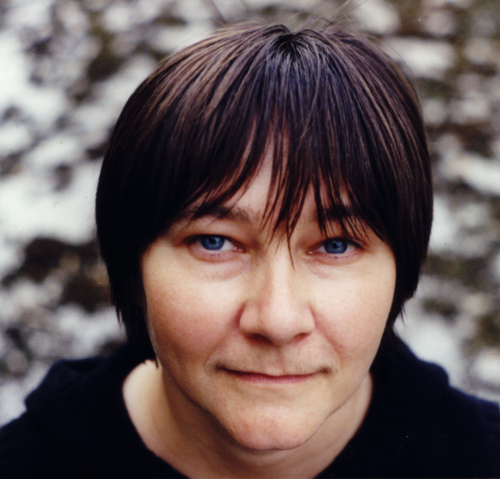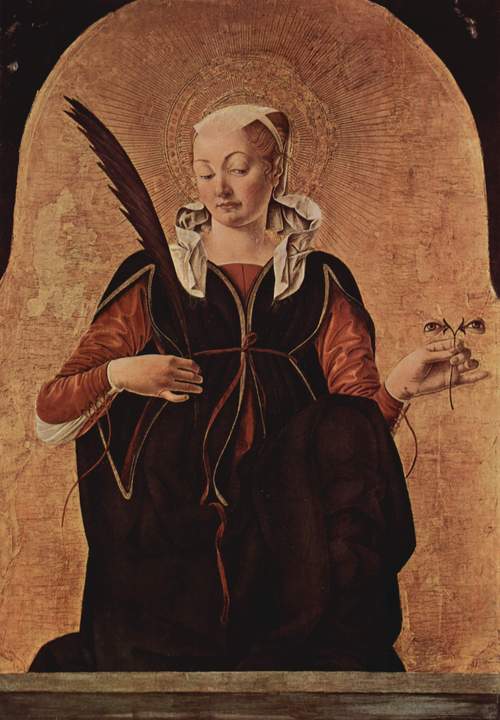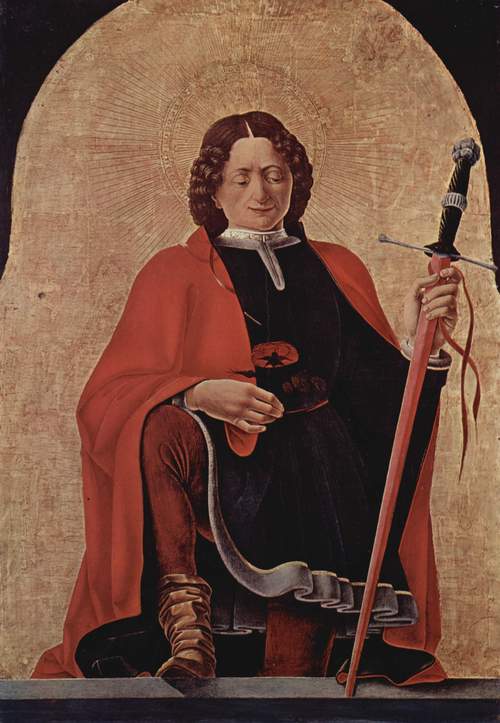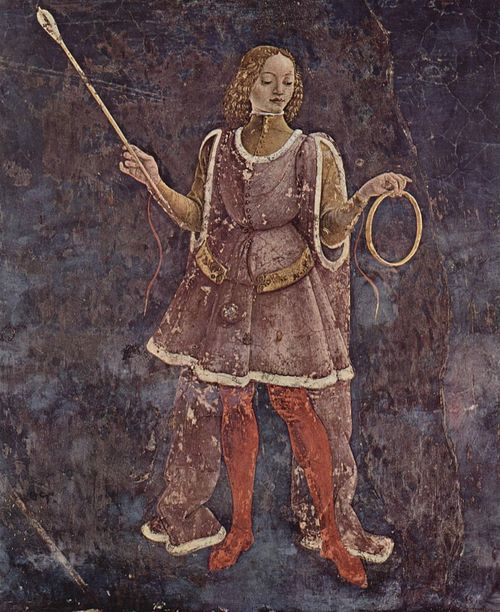
An Interview with Ali Smith
Since her first story collection Free Love and Other Stories, Ali Smith has consistently earned critical acclaim for her layered, beguiling wordplay and texts that experiment with the boundaries of form and genre. Her latest novel, the Booker Prize-nominated How to Be Both, comes out in the U.S. today.
How to be Both functions as a diptych: depending on your edition of the text, the reader may first encounter Francesco del Cossa, a gender-nonconforming Renaissance artist in Ferrara, Italy, or George, a teenage girl in the contemporary U.K. who has recently lost her mother. In The Guardian, Smith stated that she hopes the book “gestures to all the ways to read that are possible.”
Cossa’s story moves from poetry, prose, and across the adventurous landscape between the two; George’s narrative is more conventional, though no less dazzling. The two narratives intertwine and complement each other; images accumulate meaning and then skillfully contort. Duality is at the core of the stories—dead and living, man and woman, past and present.
I conducted this interview via email over several months. Smith’s interest in simultaneity was immediately reflected in our correspondence, enthusiastically veering into parentheticals and conversational fragments separated by asterisks. I read the title of the novel, fittingly, as both a statement and a question. And if there is an question posed, perhaps the answer is: joyfully.
—Amy Feltman
I. UNDERSHADOWS OR UNDERSTORIES
THE BELIEVER: I read in your 2012 interview with The Quietus that you said, “Form will tell you everything about where [people] live and what shape they’re in.” Can you speak to how form functions in How to be Both?
ALI SMITH: I came at this novel with form foremost in mind. I wanted to write something that would gesture to fresco structure. I’d been reading about Renaissance frescos and fresco technique after having traveled down in the bowels of San Clemente in Rome, a place where several different layers of the building (which has, upstairs in its surface-level church, a glorious set of frescoes depicting the martyrdom of St. Catherine opposite the Popeship of St. Ambrose—a gender lesson in itself) sift, as it were, downward, literally through time and belief systems, and end, several levels below, in a bit of ancient Roman street and an underground spring.
I’d gotten excited about a particular physical conceit: how fresco restoration—which begins with the painstaking removal of the layer of the wall into the original wet plaster of which the fresco had been painted all the centuries ago—invariably reveals the underdrawing, or sinopia, under the surface: the first work of the artist, which has been under there all this time invisible. And these underdrawings, the original designs for the work on the surface, sometimes differed wildly from, sometimes differed a tiny little bit from, and sometimes were exactly related to, that surface work. I began to think about how this is like story structure. I’ve always believed that all stories (all utterances, all language constructs) travel with the undershadows or understories of themselves.
I’d simultaneously been worrying at something Saramago says in his novel The Stone Raft, where he part comically, part seriously, laments that narrative being by nature sequential, can’t ever really do simultaneity. Like him, I think we live our lives in a dimensional meld of communal and individual and what might be called historical simultaneities. How to express this? Especially in the novel, the most societally sensitive and time-tied of the literary forms.
Someone else, a proper critic, will be able to tell you what this means about where we live and what shape we’re in, I can’t critique my own forms. I know I wanted to find one which would not just graft together the seeming disparate, and reveal that they’re not disparate at all but part of the same branch, same tree, and honor the ways in which, we contradict ourselves. A form which would make visible the things invisible to us if we stay on the surface.
I know I love and am drawn to the places where the arts cross over into each other, and love the soaring-over of all the visible and invisible borders. The novel comes in two separate parts that act as the opposite of division. They don’t just hold the keys to but crucially engage and are delivered by the imaginations of each other.
I hope.
BLVR: Do you feel like you’ve become more interested in the “undershadows” of stories as you’ve matured as a writer?
AS: No, I think I always have. The first novel I wrote told an untold unsaid understory. I don’t know how it relates to character portrayal. Maybe it’s simply that we know a great deal more about character from silence or minimality, rather than from what’s said.
BLVR: That reminds me of (admittedly my favorite) line from Faulkner’s The Sound and the Fury, when Quentin says, “Do you want me to say it do you think that if I say it it won’t be”—the idea that, once words are used to express something, the words inherently transform the thing into something else.
AS: Words and utterance and magic and power, all tied into one centuries-old knot. Which is why art—in all its forms but especially the written—goes one further and is almost always about both: the said and the not said, the apparent and the invisible, the expressed and the inarticulable. Because whatever’s said, as well as working its own magic and laying down its seemingly evident rule of itself, carries the simultaneity of what’s not being said.
 Francesco Del Cossa, from the Griffoni Altar, 1473.
Francesco Del Cossa, from the Griffoni Altar, 1473.
II. THE VERY CORNER OF THE ENVELOPE
BLVR: How did your research process for this novel differ from that of your other books?
AS: I usually don’t do any research-research. I never have before. I went to Ferrara twice, once when I knew nothing and once when I knew a little more about the place and the time—and that is the kind of research I like, involving things like sun, and the hiring of a bicycle-type I would very much like to have here at home, an Adriatica, the curved-shoulder broad and sleek white panther of the family of Italian bike-makes.
Ferrara was gorgeous, and both times we went in May, the trees out and green, greeness round the town like a garland, and the town waking to yellows and reds and the damp beginning to lift, a quiet, quite secret-seeming place. But how can it be this quiet and secret when any study of the music and art and writing of the last five hundred years began right here, in this place, where something elusive and performative, refusing and magical, cold and loving, is in the very stone? By chance we passed the Jewish graveyard, where I recognized the streetnames from Bassani’s The Smell of Hay, (a beauty of a book which has so often been overlooked for its seeming slightness) and we knocked on the door, and were welcomed in and passed the graves of the Continis and the Finzis at the gate. We followed the woodland path and found Bassani’s grave, covered in little pieces of rock and stone, right up against the greenness that borders the town he so loved. His house is just round the corner from the Palazzo Schifanoia, which as you know, is where the del Cossa frescoes are, and it’s every bit as quiet and secretive there as it is in this calm town, except on the walls, which are a gracious riot of color and life, expecially del Cossa’s wall.
When del Cossa wrote asking the Duke for more money in that letter, he was suggesting he was better than everybody else painting in the palazzo, and should be paid for this. As George says in the book, he was right!
BLVR: What was the process like for building the character of Francesco del Cossa? Was this your first experience writing outside of your historical time period, and how did it differ from creating George’s narrative?
AS: It’s far and away my most “historical” so far—but the life of the written, if it’s working properly, is always contemporaneous, so it was simply a matter of live voice as usual, but with the added pleasure of having what remains of the real del Cossa all these years after as a stimulus, as well as the impetus, new to me, of understanding the constraints and probabilities of another country five hundred years ago as a new kind of back-scaffolding.
Plus—the pictures themselves, both the attributed and the questionably-attributed or once-attributed, and the stylistic unifiers between them, from which I could know the following. He is witty. He makes ordinariness rich. He is radical, gentle, vain, harsh, and loves to surprise stone with unexpected natural growth. He likes ambiguities. He is daringly ahead of his time. He is satirical and graceful, both. He pre-echoes what’s happening more than a hundred years later. He is elusive. He loves creatures. He knows cruelty. He uses his materials with a recklessness that pays off.
And then—the story of his vanishing, and his rediscovery. It is the stuff both of literal excavation and a kind of Shakespearean promise of revelation. Our little lives, rounded with their sleep—then the unthinkable—wakened again.
There’s very little known about del C, and it’s almost all in other languages than English, so it was always a matter of translation. And above all, there’s his extant letter to the Duke—the first letter we have where an artist asks to be paid more, to be paid his worth, and perhaps also the first proof of artistic vanity. The letter gave me a handwriting, a pretty precise idiolect and above all a syntax, and with those three things came voice for sure (and actual hands as well). It was a matter of small seeds splitting open and producing color with the slightest of tending, a case of imaginative wide-open take. What little I had always sent the story well on its way. I also had Ariosto, Boccaccio, Tasso, Cennini, Alberti, della Francesca and the other artists who will have produced this artist, Bassani, Antonioni, and a range of pretty wonderful books about the early renaissance, from Edgar Wind to Aby Warburg and his theories on cross cultural memory. Almost everything I read, or just glanced at, threw me a handful of grit and blossoms.
Plus this shining advice: last year I sat next to Tom Stoppard at a posh supper we happened both to be at (we’d never met before) and he told me about a project he was working on, and how he was trying consciously to avoid research. Only lift the very corner of the envelope, he said. Otherwise what we’re working on loses its vitality.
Meanwhile, the narrative concerning George arrived, literally its first three pages verbatim, in the middle of the Francesco narrative. Uh-oh, I thought, I better hurry up with this, since the other’s ready to come. Fresco—it has to be done fast—done before the plaster dries. Best discovery of all, and I didn’t know this for sure till my final edit, but the halves had been in their own dialogue all along.
BLVR: What do you think you can determine about a person by their handwriting, idiolect, syntax? How did it make you feel closer to del Cossa?
AS: It’s all a kind of voice, I think. It was the word, the sentence and the sentence structure as visuals, by someone for whom and by whom life and work is the world made visual – it has to be at least interesting. And it was the performance of formality. The slippage of idiosyncracy. Something both untaught and deeply ceremonious, polite verging on impolite, a little underhand while seeming very candid. The concentration of determination and doubt in the straightness and tightness of the forming of the line, and his unwillingness to end a sentence where a sentence usually ends (= hopeful, grandiose, connective, and structurally pushing-it) – it also says something about tenacity, authority, pride and insecurity. I think syntax always tells you loads of things. It’s someone’s written rhythm, like another kind of heartbeat.
BLVR: If you conceptualize voice as a heartbeat, does that mean it’s the first piece of a character to be established? Do you think any of your characters occupy the same heart-space?
AS: Yes. I think they all have their own distinct rhythms. It’s getting the rhythm right that’s at the heart of the fiction being true.
 Francesco Del Cossa, from the Griffoni Altar, 1473.
Francesco Del Cossa, from the Griffoni Altar, 1473.
III. ALL SORTS OF TRAPPINGS
BLVR: I would love to hear you talk about the portrayal of sexuality in this text. When a character appears to you, do you consider his/her sexual orientation as a pivotal piece of the puzzle? Or is it a more organic discovery along the way?
AS: Whoever comes brings his or her sexuality with him or her. More interestingly, in a way, I was quite unwilling to go with the “historical” story in How to Be Both—unthinkable when I started writing it. I didn’t really want to write a historical story, and I wasn’t immediately willing to square up to the bothness in gender terms. Mostly this was because I knew next to nothing about the Renaissance.
But four months into the process the Francesco voice hit me out of nowhere, literally and syntactically, and I knew I hadn’t a choice and should go with it, so I ditched what I’d written already and went with him/her. It’s subtle, the both thing, in the novel. It’s about not being binary, at all points. About being manifold. And what does sexuality mean, once you’re dead? It’s lifeforce I’m drawn to. Though I do remember thinking, I hope this story won’t be beholden to or become quicksanded in anything that’s not the art life.
It’s tough that one of the only stories about female artists in the Renaissance is the story of Artemisia Gentileschi, whose paintings are out of this world, amazing works, and who’s almost never spoken of without reference to the rape and the ensuing trial that forms the usual center of her biography. I hoped to be able to free us up from all sorts of trappings, I think, in this book.
BLVR: What trappings are your characters scuttling from?
AS: They’re stuck with their life qualities and characteristics the same as we all are… but fiction can be a generous thing as well as a true thing. There’s always another story.

Francesco Del Cossa, Allegory of March-Triumph of Minerva (detail), 1469-1470.
Portrait of Ali Smith by Sarah Wood.




